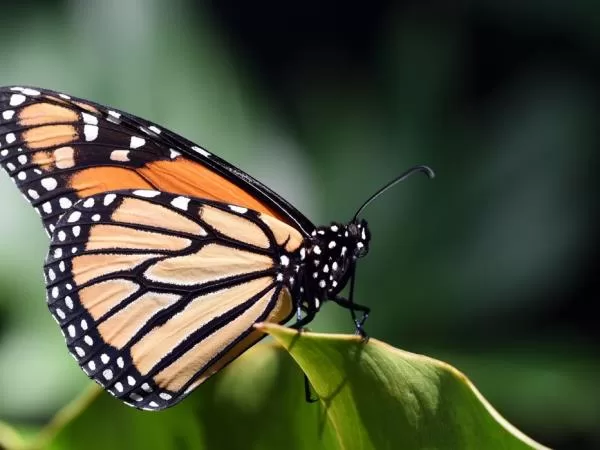
Monarch Butterflies: Essential Pollinators and Their Role in Ecosystem Balance
Monarch butterflies are captivating creatures that play an integral role in maintaining the balance of ecosystems. As pollinators, they contribute to the reproduction of many plants, supporting both wild and cultivated landscapes. Their impact extends beyond their own species, helping sustain biodiversity. However, monarchs are just one part of a larger network of pollinators crucial for the environment’s health.

The Role of Hummingbirds and Other Pollinators
In addition to monarch butterflies, hummingbirds are important pollinators. These birds are naturally drawn to plants like columbine, which offer food while benefiting from pollination. Hummingbirds help ensure the survival of plants, much like monarchs. Plants that attract hummingbirds, such as hummingbird mint, sustain these pollinators, supporting both the birds and the plants they pollinate.
Bees, too, play a vital role. Honeybees and leaf-cutter bees are essential for pollinating many flowers. This helps the reproduction of plants important for food production, wild flora, and overall ecosystem health. Bees and hummingbirds may have different pollination patterns, but they share a goal: sustaining the plants they depend on. In doing so, they maintain biodiversity and support the web of life.

The Interdependence Between Monarchs and Milkweed
Monarch butterflies rely on milkweed. This plant serves as the primary food source for monarch caterpillars and attracts other pollinators, like bees. Milkweed’s flowers provide nectar, ensuring a steady supply of food for both caterpillars and bees. Planting milkweed is an effective way to support monarchs and other pollinators that depend on it.
Providing environments that encourage pollination has a far-reaching impact. Gardeners who grow milkweed or install hummingbird feeders are not only helping monarchs and hummingbirds but also contributing to ecosystem health. By planting the best flowers for monarch butterflies, we can create environments that promote biodiversity, helping all pollinators thrive.


Monarch Butterflies as Environmental Indicators
Monarchs also serve as environmental indicators. Their population fluctuations can signal broader ecological problems. A significant decline in monarch numbers can indicate habitat loss, climate change, or pesticide use. These issues don’t just affect monarchs but many other species in the same ecosystems. Protecting monarchs is crucial to preserving the health of ecosystems and biodiversity for future generations.

The Importance of Conservation Efforts
Conserving pollinators like monarch butterflies, bees, and hummingbirds is critical. Habitat loss and environmental degradation threaten their survival. Organizations such as the National Audubon Society are working tirelessly to protect these vital creatures.
By raising awareness and implementing conservation strategies, they help ensure these species can continue to thrive. Simple actions, like incorporating pollinator-friendly plants in gardens and supporting conservation efforts, can make a big difference. Creating habitats for pollinators helps preserve ecosystems that sustain forests, agricultural lands, and green spaces. Ensuring the survival of monarchs, bees, and hummingbirds benefits both the environment and the plants that sustain many ecosystems.
Get the latest stories, exclusive insights, and special offers delivered straight to your inbox.


